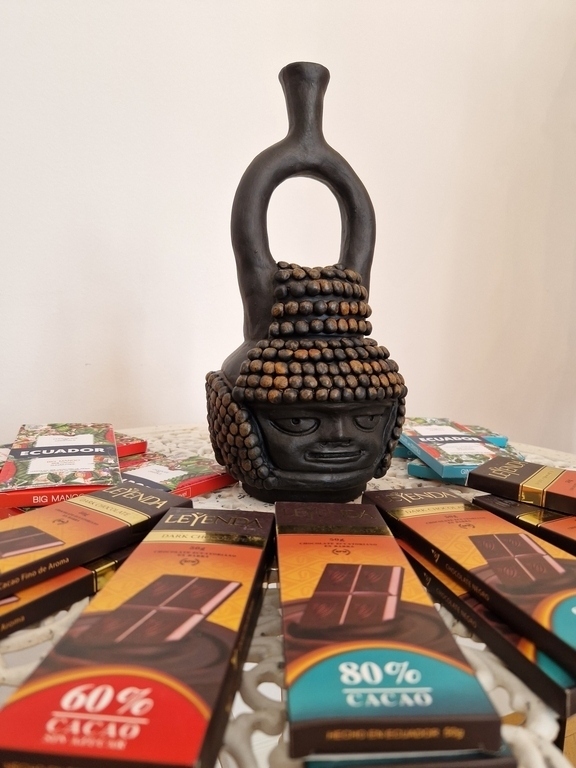The origin of cocoa is in Ecuador – an important archeological finding is arriving to Budapest

Ecuador takes pride in its heritage as the origin of cacao, and the government has created a series of replicas of this historic vessel found in the region. One of these replicas will be showcased at the Szamos Chocolate Museum, open to the public from April 27th, 2023, providing a unique glimpse into the earliest stages of chocolae’s rich history.
Archeological research in Ecuador indicates that Theobroma Cacao, or simply cocoa, was first cultivated in the Upper Amazon region. The Santa Ana-La Florida site, associated with the Mayo-Chinchipe culture, provided evidence of this discovery. The site, located in Palanda, Ecuador, 1,040 meters above sea level, is where the oldest cocoa beans in the world were discovered.

In October 2018, a scientific article title “The Use and Domestication of Theobroma Cacao during the mid-Holocene in the Upper Amazon” was published in the journal ”Nature Ecology & Evolution”. The research was conducted by 19 researchers from Canada, France and Ecuador.
The article describes the early domestication and use of cocoa in Ecuador, based on analysis conducted at the University of Calgary, Canada. The analysis was done on a bottle with two handles, depicting the Spondylus shell from which the double image of a human being emerges, found at the Santa Ana-La Florida site. Starch granules from cocoa were discovered inside the bottle, which belonged to the Mayo Chinchipe culture, with a carbon-14 test dating of 3500 BC to 3330 BC, or 5300 – 5500 years ago.
The Mayo Chinchipe culture used processed cocoa as a significant social and symbolic component of their diet, interacting with the Andean region and Pacific coast civilizations, through which Amazonian cocoa was introduced to the Ecuadorean coast and eventually transported to Mexico and Mesoamerica, along with the Spondylus shell. The available evidence suggests that the Mayas and Aztecs of Mexico used cocoa from Ecuador to make a beverage known as “xcocolatl”; in the Nahuatl language, marking the beginning of chocolate’history.
The Mayo-Chinchipe culture played a significant role in the domestication and distribution of cocoa, leading to its widespread consumption throughout the world, allowing us to indulge in the deleightful taste of chocolate. This exhibition, together with the Ecuadorean vessel, will provide visitors with an opportunity to learn about the cultural roots and origin of cacao, and the history of chocolate. The exhibition of the treasure found in Palanda will be open to the public from April 27 th at Szamos Chocolate Museum.
Source: Press release





